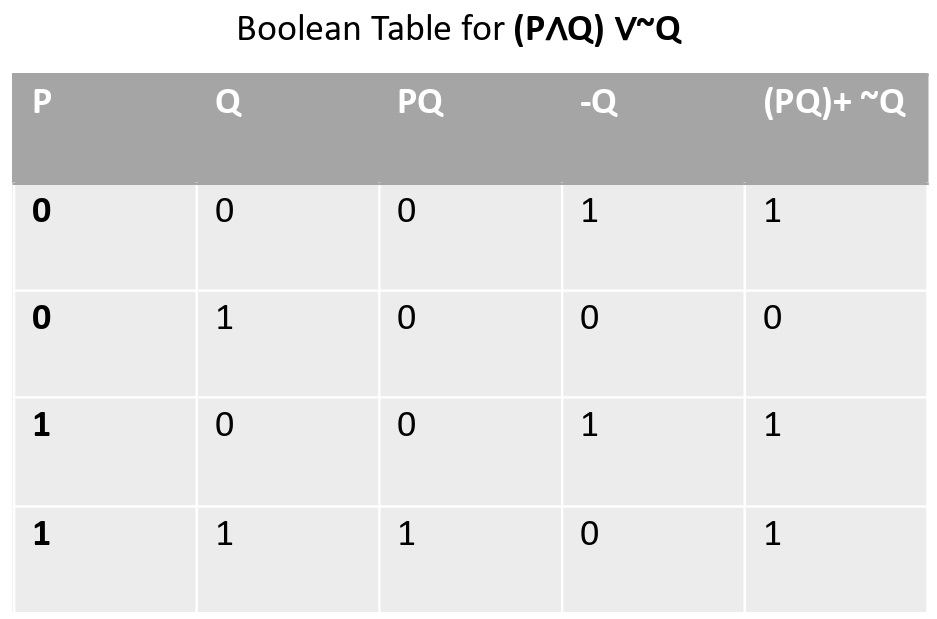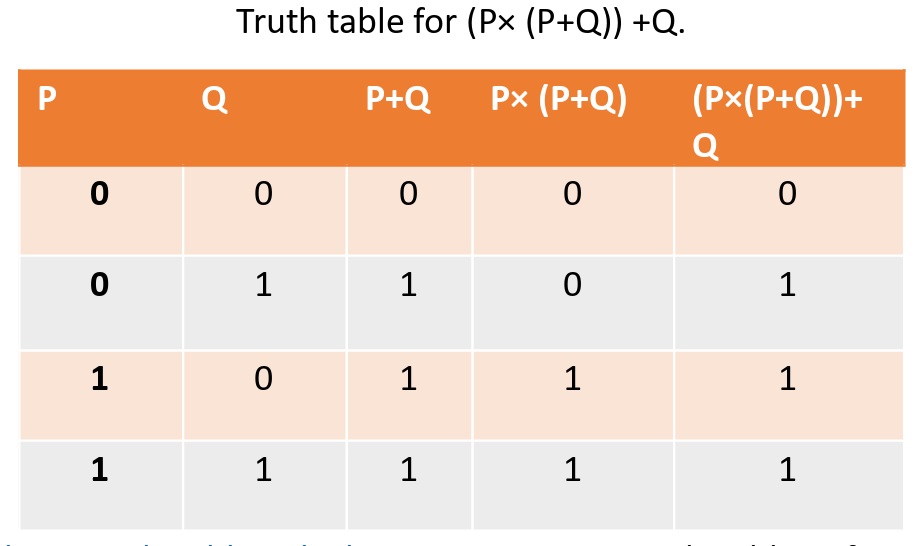In this article you will learn fundamentals of Boolean algebra, which is a mathematical system used to analyze and manipulate logical expressions and binary variables. Boolean algebra developed by George Boole in the mid-19th century, Boolean algebra give a detail framework for analyzing and manipulating logical expressions.
Boolean algebra is fundamental in digital circuit design, computer programming, and various fields where binary decision-making is essential. It uses logical operations like AND, OR, and NOT to simplify and reason about complex logical relationships.
In this article, we will explore the Boolean algebra with the help of definition, operation, and theorem of Boolean algebra. Moreover, for a better understanding we’ll also explained the topic with the help of examples.
Definition of Boolean Algebra
A Boolean algebra is a set B together with two operations + and “.” i.e., AND & OR such that all addition and multiplication are in B and hold the given properties:
Commutative laws:
For all a, b in B,
- a + b = b + a (OR is commutative)
- a · b = b · a (AND is commutative)
Associative laws:
For all a, b, c in B,
- (a + b) + c = a + (b + c) (OR is associative)
- (a · b) · c = a · (b · c) (AND is associative)
Operations of Boolean algebra
In this we will explain the concept of Boolean algebra with the help of different operation.
Boolean Variables:
The variable of Boolean algebra are represented as A, B, and C, respectively, these variables takes true or false values.
Logical Operations:
| Name of operation | Description |
| NOT | Denoted as ¬ or (prime), it negates the input value. For example, ¬A represents the opposite of A. |
| AND | Denoted as ∧ it yields true (1) only when both input values are true. When the value of both A and B are true then the result of A ∧ B is true. |
| OR | Denoted as ∨ it yields true (1) if at least one of the input values is true. If anyone’s value is true, then the result of A ∨ B is true. |
| XOR (Exclusive OR) | Denoted as ⊕, it yields true (1) when exactly one of the input values is true, but not both. A ⊕ B is true if A is true or B is true, but not both. |
Universal NOR Gate Truth Table, Logic Circuit and IC PIN Diagram
Boolean Expressions:
Boolean expressions are combinations of Boolean variables and logical operations. For example, (A AND B) OR (C AND ¬D) is a Boolean expression.
Truth Tables:
Truth tables are used to systematically list all possible combinations of input values for a Boolean expression and determine the corresponding output values.
Boolean Laws:
There are several fundamental laws and theorems in Boolean algebra, such as the commutative, associative, and distributive laws, which help simplify and manipulate Boolean expressions.
Theorem of Boolean algebra
In this section, we will discuss the Boolean algebra laws.
Identity Law:
- AND Identity: A AND 1 = A
- OR Identity: A OR 0 = A
Null Law:
- AND Null: A AND 0 = 0
- OR Null: A OR 1 = 1
Domination Law:
- AND Domination: A AND A’ = 0
- OR Domination: A OR A’ = 1
Idempotent Law:
- AND Idempotent: A AND A = A
- OR Idempotent: A OR A = A
Commutative Law:
- AND Commutative: A AND B = B AND A
- OR Commutative: A OR B = B OR A
Distributive Law:
- AND Distributive: A AND (B OR C) = (A AND B) OR (A AND C)
- OR Distributive: A OR (B AND C) = (A OR B) AND (A OR C)
De Morgan’s Theorem:
- AND De Morgan: (A AND B)’ = A’ OR B’
- OR De Morgan: (A OR B)’ = A’ AND B’
Absorption Law:
- AND Absorption: A AND (A OR B) = A
- OR Absorption: A OR (A AND B) = A
Double Negation Theorem:
- A = (A’)
Consensus Theorem:
- A AND B OR A’ AND C OR B AND C = A AND B OR A’ AND C
Redundancy Law:
- A OR A’ = 1
- A AND A’ = 0
Example section
In this section for a better understanding the Boolean algebra we will discuss the concept of Boolean algebra with the help of detailed examples.
Example 1:
Evaluate the truth table of the given expression (P× (P+Q)) +Q.
Solution:
Given data
(P× (P+Q)) +Q
Step 1:
Boolean theorem
(P + Q) P +Q
Step 2:
Truth table for (P× (P+Q)) +Q.
You can also use a Boolean truth table calculator to generate truth tables of any function in a couple of seconds.
Example 2:
(P∧Q) ∨~Q Represent in truth table form.
Solution
Given expression
(P∧Q) ∨~Q
Step 1:
By using Boolean algebra.
QP + Q
Step 2:  Boolean Table for (P∧Q) ∨~Q
Boolean Table for (P∧Q) ∨~Q
Conclusion
In this article, we have discussed the Fundamentals of Boolean Algebra which are definition, operation, and theorem of Boolean algebra. Moreover, for a better understanding of the reader Boolean algebra is more explained with the help of detailed examples. After studying this article anyone can defend this article easily.
FAQs on Fundamentals of Boolean Algebra
In this section Boolean algebra is explained with the help of a maximum asked question.
Question Number. 1:
How is Boolean algebra used in digital circuit design?
Answer:
Boolean algebra is essential in designing digital circuits. It helps simplify and optimize logical circuits, leading to more efficient and reliable electronic systems.
Question Number. 2:
Can Boolean algebra be applied in computer programming?
Answer:
Yes, Boolean algebra is widely used in computer programming for tasks such as conditional statements (if-else), bitwise operations, and logical comparisons.
Question Number. 3:
What role does Boolean algebra play in logic gates?
Answer:
Logic gates in digital electronics are physical implementations of Boolean algebraic operations. Understanding Boolean algebra is crucial for designing and analyzing the behavior of logic gates.


